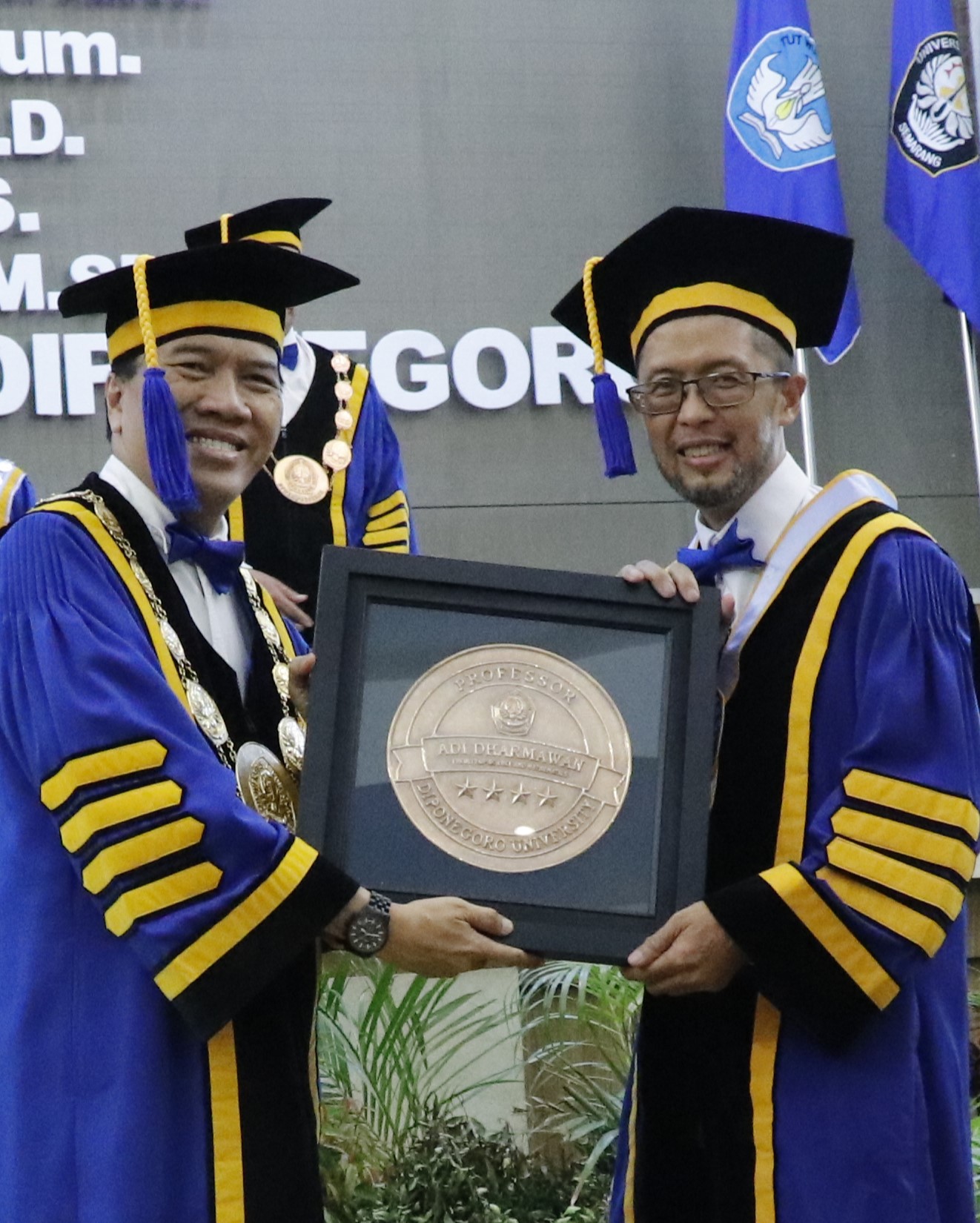Diponegoro University appointed three professors from the Faculty of Science and Mathematics on Thursday (14/12) at the Prof. Soedarto, S.H. Building, Undip Tembalang. In the afternoon session, the three professors who were inaugurated were Prof. Adi Darmawan, S.Si., M.Si., Ph.D., Prof. Dr. Parsaoran Siahaan, M.S., and Prof. Dr. Eng. Agus Setyawan, S.Si., M.Si.
In the scientific material entitled “Silica Membranes for Hydrogen Separation and Desalination as Energy Solutions and Clean Water Supply,” Prof. Adi said that membrane technology, especially silica membranes, plays a vital role in desalination and hydrogen production. Inorganic membranes, especially silica membranes, offer high performance, durability and reliability in a wide range of applications. Silica membranes, consisting of thin layers of porous amorphous silica, are prominent in separation technology.

“Silica membranes face challenges, including issues of scalability, long-term stability, and the need for precise control of pore size distribution. Manufacturing cost-effectiveness, compatibility with harsh environments, and membrane fouling are significant challenges that require multidisciplinary solutions. In water treatment, silica membranes offer a reliable desalination solution. Silica membranes are expected to integrate nanotechnology, hybridization, and sensor technology, revolutionizing separation processes in various industries and contributing to sustainability and efficiency.
On this occasion, Prof. Parsaoran presented the title of his scientific work, “Molecular Modeling of Intermolecular Interaction Systems for Peptide Compounds in Blood Brain Barrier (BBB) Modulation.” He said that various molecular models of small-sized intermolecular interaction systems (complexes) had been explored to justify their application to medium- and large-sized molecules.
“The application of molecular modeling of intermolecular interactions to one of the Blood Brain Barrier (BBB) molecules, namely the EC1-EC2 segment of the E-Cadherin protein with ligands of various types of ADT and HAV peptides, is able to explain the mechanism of diffusion (transport) of active compounds (drugs) into the brain, namely by modulating BBB porosity,” he said.
Furthermore, he added that the modulation is explained by molecular dynamics, namely changes in the conformational structure and configuration of EC1-EC2…ADT or EC1-EC2…HAV as a function of complex time. The modulation likewise models the chitosan complex to explain encapsulation. Modeling more complex molecular interactions using classical methods (model-2) and quantum methods (model-3) is open to be carried out and developed for various chemical systems found within the human body and even chemical systems outside the human body.
Meanwhile, Prof. Agus explained “The Role of Geophysics in Geothermal Development on Mount Ungaran.” Mount Ungaran, which is in Central Java and is about 30 km from Diponegoro University, is one of the geothermal energy potentials in Indonesia.
“Studies using geophysics have been carried out on Mount Ungaran by applying several methods, namely gravity, spontaneous potential, seismic, temperature gradient and infrared image processing. The results of gradient analysis on gravity data show that there are geothermal manifestations such as fumaroles, hot springs, and alteration zones related to the presence of faults which generally trend northwest-southeast and northeast-southwest,” he concluded. (LW-Public Relations)